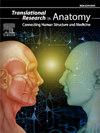A concise historical sketch on the early anatomical understanding of peripheral nerves
Q3 Medicine
引用次数: 0
Abstract
Background
In early medical traditions, the nervous system was not merely a subject of anatomical interest, but also a lens through which broader questions about life, sensation, and the soul were explored. Discussions of “nerves” addressed not only anatomical structures, but also vital, emotional, and even spiritual functions.
Aim
The aim of this concise historical sketch is to revisit how the concept of the nerve evolved throughout the history of anatomy — from its ancient roots to the point at which it entered the increasingly precise anatomical vocabulary during the Renaissance.
Conclusions
The concept of the nerve, as we understand it today, emerged gradually — grounded in ancient observations and philosophical reflections, and refined over centuries of anatomical inquiry. While successive corrections and innovations helped move anatomical knowledge toward greater precision, the early outlines of neuroanatomical thinking were already present in antiquity. Although modern terminology and classification systems were introduced much later, the foundations for understanding the structure and function of nerves were laid during the formative periods of medical science.
对周围神经早期解剖学认识的简明历史概述
在早期的医学传统中,神经系统不仅是解剖学上的一个主题,而且是一个透镜,通过它可以探索有关生命、感觉和灵魂的更广泛的问题。关于“神经”的讨论不仅涉及解剖结构,还涉及生命、情感甚至精神功能。目的:这篇简明的历史概述的目的是重新审视神经的概念是如何在解剖学的历史上进化的——从它的古老根源到文艺复兴时期它进入越来越精确的解剖学词汇。神经的概念,正如我们今天所理解的,是逐渐出现的——基于古代的观察和哲学思考,并在几个世纪的解剖学研究中得到完善。虽然不断的修正和创新有助于解剖学知识向更精确的方向发展,但神经解剖学思维的早期轮廓在古代就已经存在了。尽管现代术语和分类系统是在很久以后才引入的,但在医学科学的形成时期,就为理解神经的结构和功能奠定了基础。
本文章由计算机程序翻译,如有差异,请以英文原文为准。
求助全文
约1分钟内获得全文
求助全文
来源期刊

Translational Research in Anatomy
Medicine-Anatomy
CiteScore
2.90
自引率
0.00%
发文量
71
审稿时长
25 days
期刊介绍:
Translational Research in Anatomy is an international peer-reviewed and open access journal that publishes high-quality original papers. Focusing on translational research, the journal aims to disseminate the knowledge that is gained in the basic science of anatomy and to apply it to the diagnosis and treatment of human pathology in order to improve individual patient well-being. Topics published in Translational Research in Anatomy include anatomy in all of its aspects, especially those that have application to other scientific disciplines including the health sciences: • gross anatomy • neuroanatomy • histology • immunohistochemistry • comparative anatomy • embryology • molecular biology • microscopic anatomy • forensics • imaging/radiology • medical education Priority will be given to studies that clearly articulate their relevance to the broader aspects of anatomy and how they can impact patient care.Strengthening the ties between morphological research and medicine will foster collaboration between anatomists and physicians. Therefore, Translational Research in Anatomy will serve as a platform for communication and understanding between the disciplines of anatomy and medicine and will aid in the dissemination of anatomical research. The journal accepts the following article types: 1. Review articles 2. Original research papers 3. New state-of-the-art methods of research in the field of anatomy including imaging, dissection methods, medical devices and quantitation 4. Education papers (teaching technologies/methods in medical education in anatomy) 5. Commentaries 6. Letters to the Editor 7. Selected conference papers 8. Case Reports
 求助内容:
求助内容: 应助结果提醒方式:
应助结果提醒方式:


